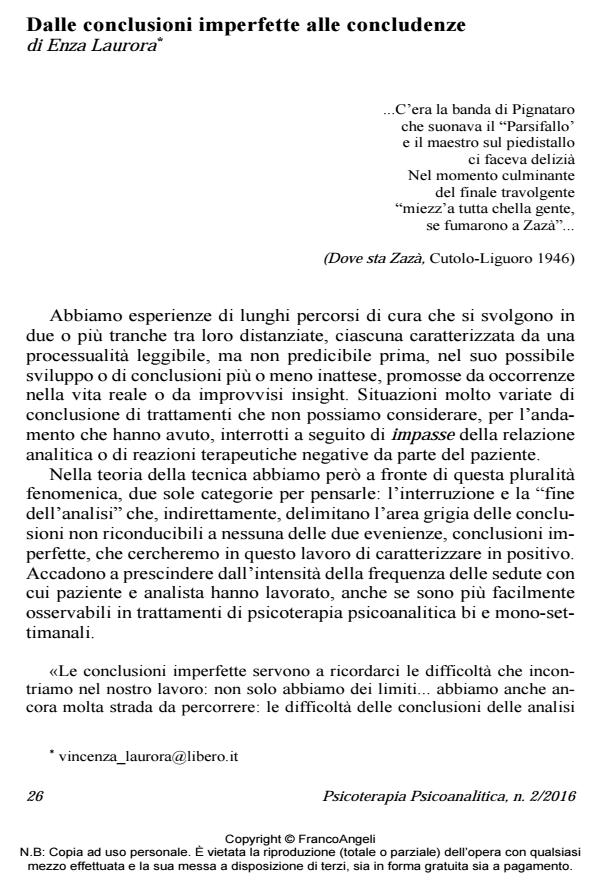From imperfect conclusions to the conclusiveness
Journal title PSICOTERAPIA PSICOANALITICA
Author/s Enza Laurora
Publishing Year 2016 Issue 2016/2
Language Italian Pages 23 P. 26-48 File size 215 KB
DOI 10.3280/PSP2016-002002
DOI is like a bar code for intellectual property: to have more infomation
click here
Below, you can see the article first page
If you want to buy this article in PDF format, you can do it, following the instructions to buy download credits

FrancoAngeli is member of Publishers International Linking Association, Inc (PILA), a not-for-profit association which run the CrossRef service enabling links to and from online scholarly content.
The reflections on the phenomenology of non-agreed on conclusions of therapy Induce the Author to identify another possible way of terminating, centered on the unconscious evolutionary motivations of the patient, which, besides attributing psychoanalytic meaning to conclusions, lead to a new model of process development. To this aim the Author proposes, thanks to theoretical arguments and clinical examples, that we should think of the work of the cure as a process set in motion by unconscious developmental motivations, modulated, both at the level of transferential activation and at the level of setting, by the patient’s need for development, without losing acceptable states of psychic organizations.
Keywords: End of analysis, closures, psychotherapeutic process, cohesion and revitalization of the Self, self-hetero organization, developmental motivations
Enza Laurora, Dalle conclusioni imperfette alle concludenze in "PSICOTERAPIA PSICOANALITICA" 2/2016, pp 26-48, DOI: 10.3280/PSP2016-002002